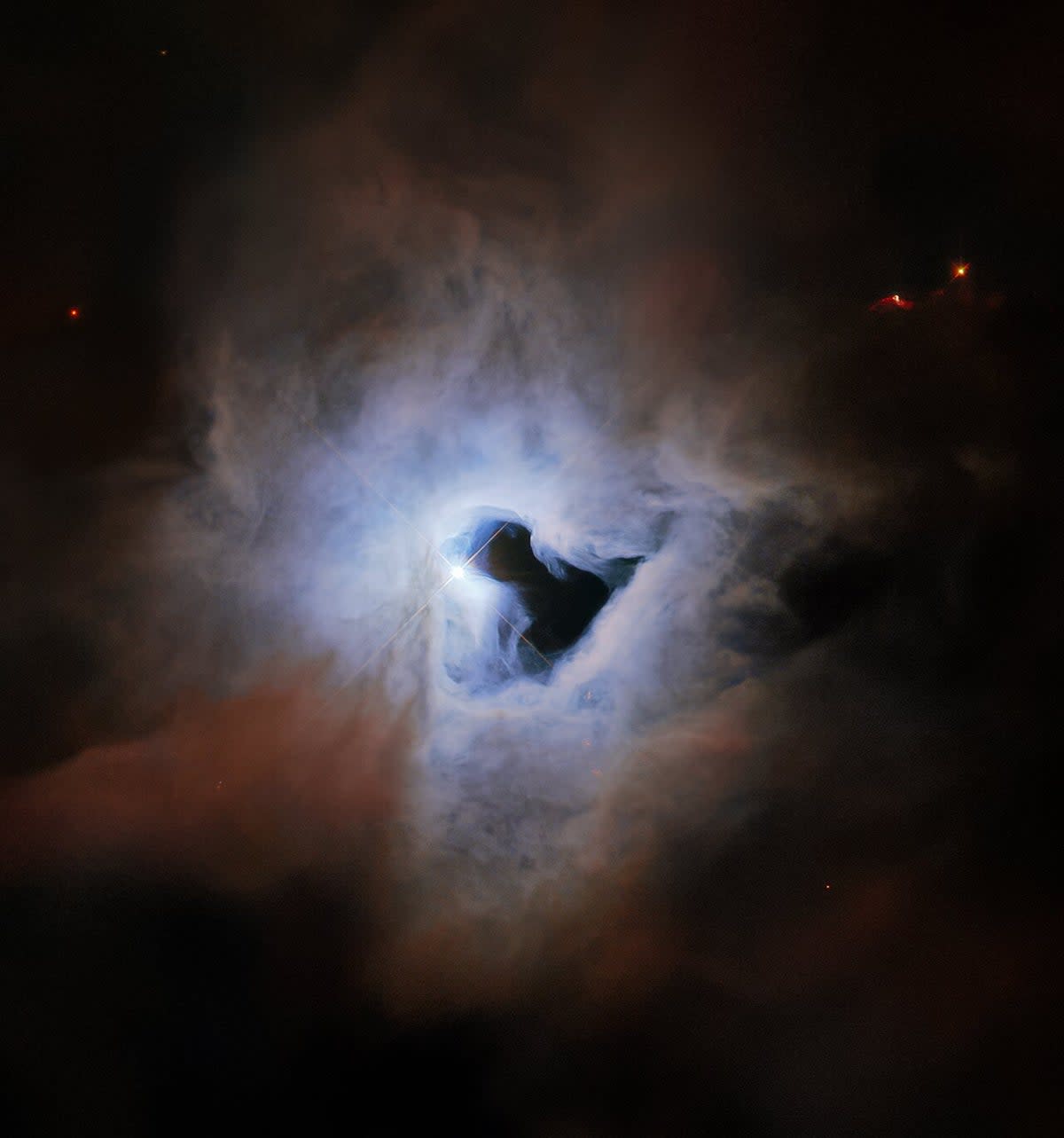New Hubble telescope image reveals giant cosmic ‘keyhole’ in the blackness of space

A newly released image from the Hubble Space Telescope reveals a smoke-wreathed keyhole among the stars.
The telescope returned an image of a so-called “reflection nebula” around 1,350 light years in the constellation Orion. Reflection nebulae are only visible when illuminated from within, according to a European Space Agency blog post about the image, and in this case a newly born star provides that light.
Known as V380 Orionis, the young star acts like a lamp in a smoky room, illuminating the clouds of gas and dust curling around it — these are materials leftover from the star’s formation. At the center of the image is an inky black region that appears like a keyhole into a darkened room.
According to ESA, when the Hubble telescope first took this image in 1999, it wasn’t clear if the apparent keyhole was an actual hole through the nebular material, or some mass of particularly cold gas and dust. Subsequent observations by ESA’s Herschel Space Observatory, a space telescope with more powerful optics than Hubble that flew from 2009 through 2013, confirmed that the keyhole is, in fact, a hole, providing a view to space on the other side of the nebula.
Scientists do not yet understand the origin of the keyhole void in the nebular, according to ESA.
The ESA’s Hubble telescope account on the social media website Twitter shared the keyhole image Monday morning.
1/ You would need a big key to unlock this peculiar picture of the week from Hubble. This image shows NGC 1999, a reflection nebula in the constellation Orion. NGC 1999 is composed of detritus left over from the formation of a newborn star.
Read more: https://t.co/KhVPRkDw7H pic.twitter.com/Zk362jqImb— HUBBLE (@HUBBLE_space) October 24, 2022
Although the new James Webb Space Telescope continues to awe scientists and the public with new space images made possible with its record-breakingly powerful optics, the Hubble telescope, and other space observatories, continue in their missions, providing scientifically important and sometimes beautiful views of the universe.
Rather than replacing older space telescopes, the Webb telescope often teams up with them. The collaboration provides either alternative views of cosmic phenomena, or allows scientists to create composite images in order to create a fuller picture of distant objects. Astronomers recently combined both Webb and Hubble data to create striking images of a distant pair of galaxies, while Hubble and Webb data were also combined with observations by Nasa’s Chandra X-ray Observatory to create new depth to some of the first images from the Webb telescope.

